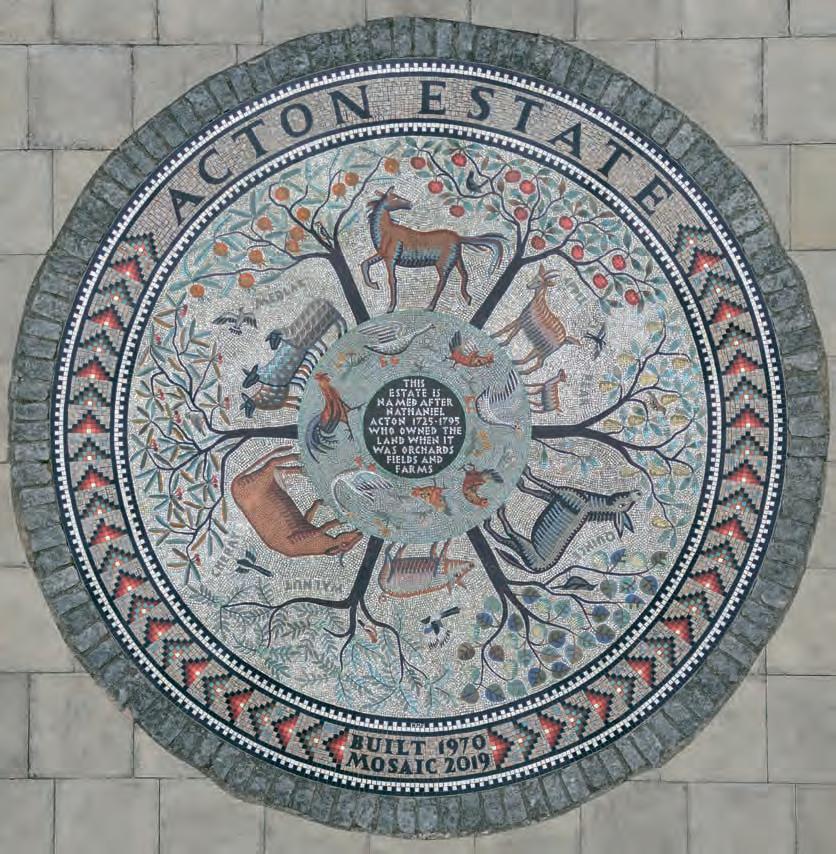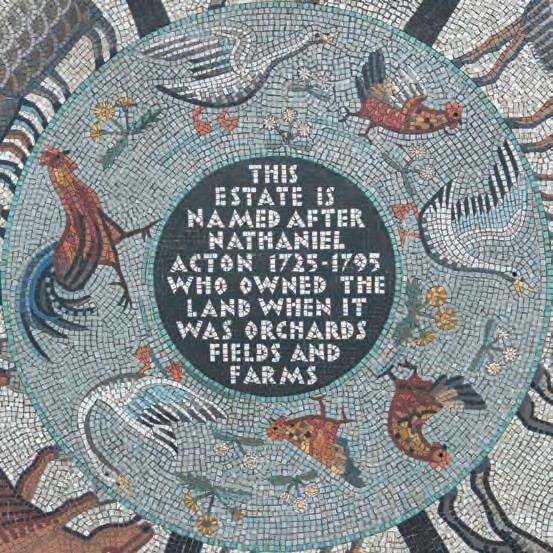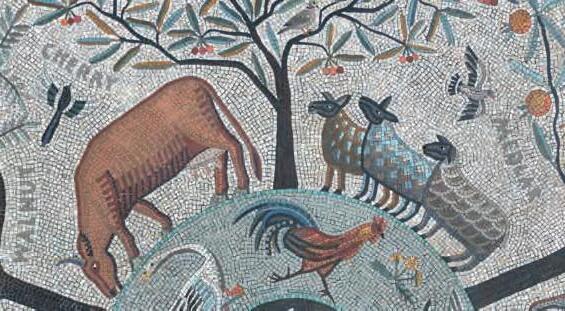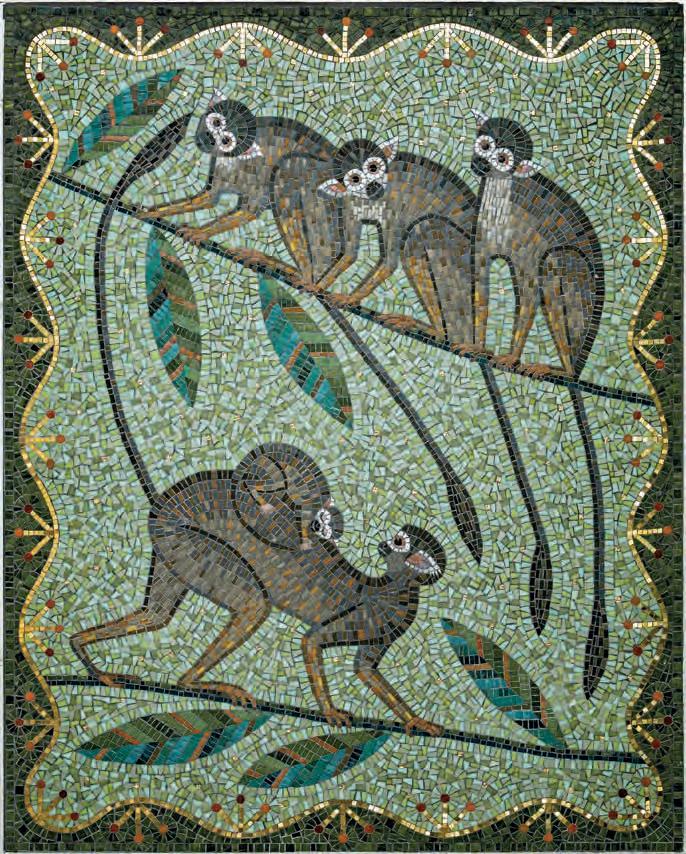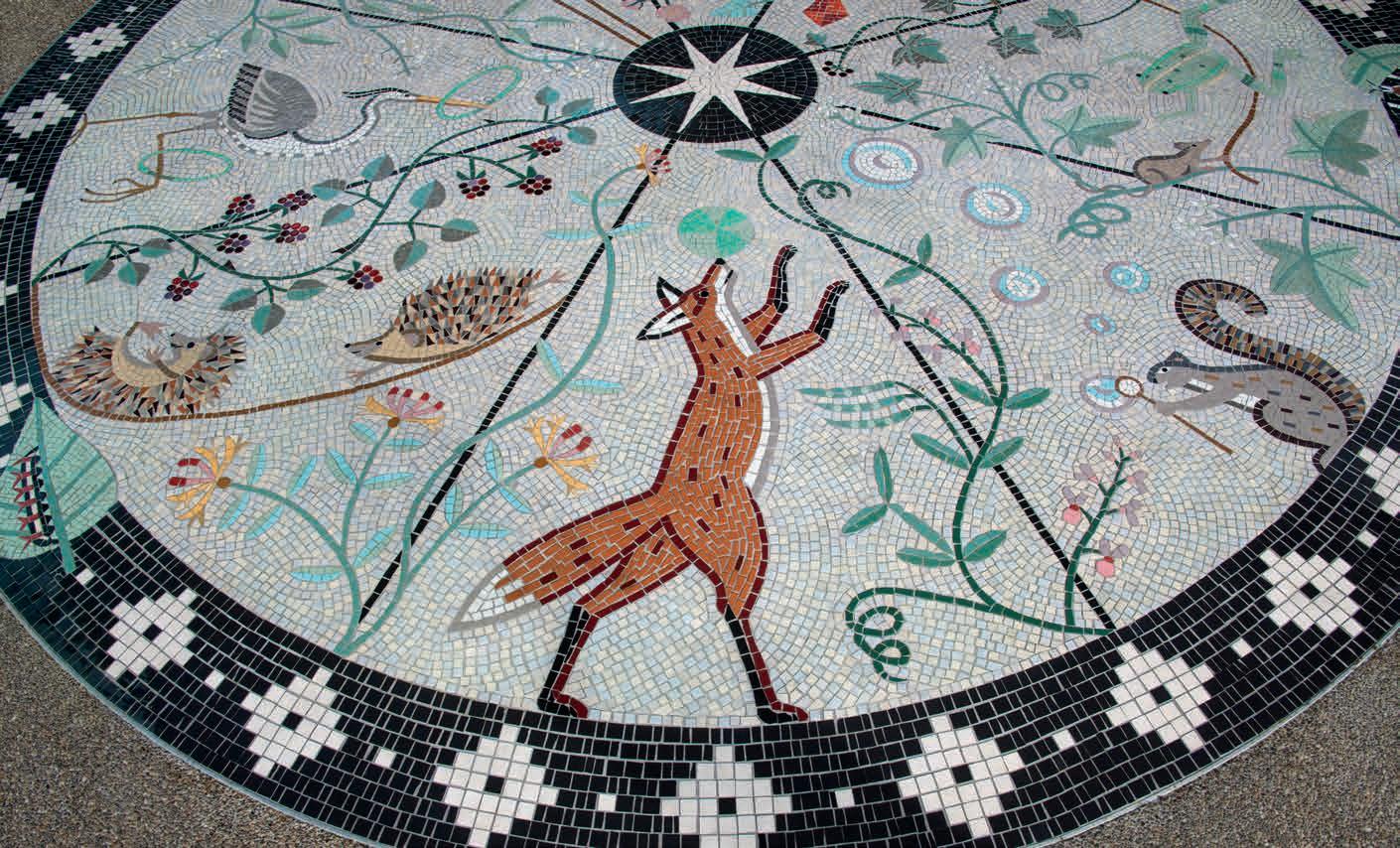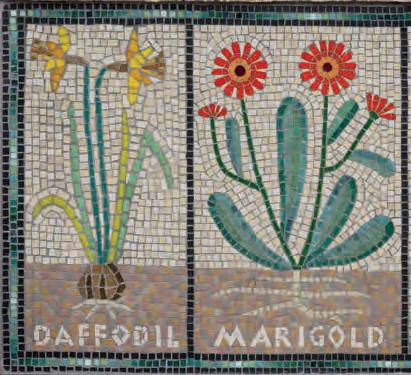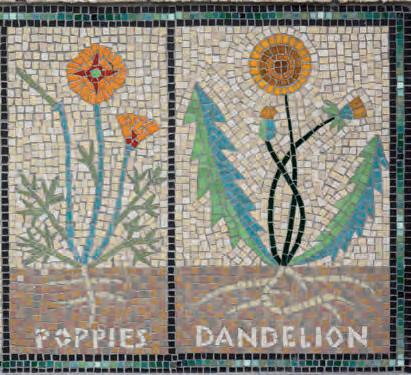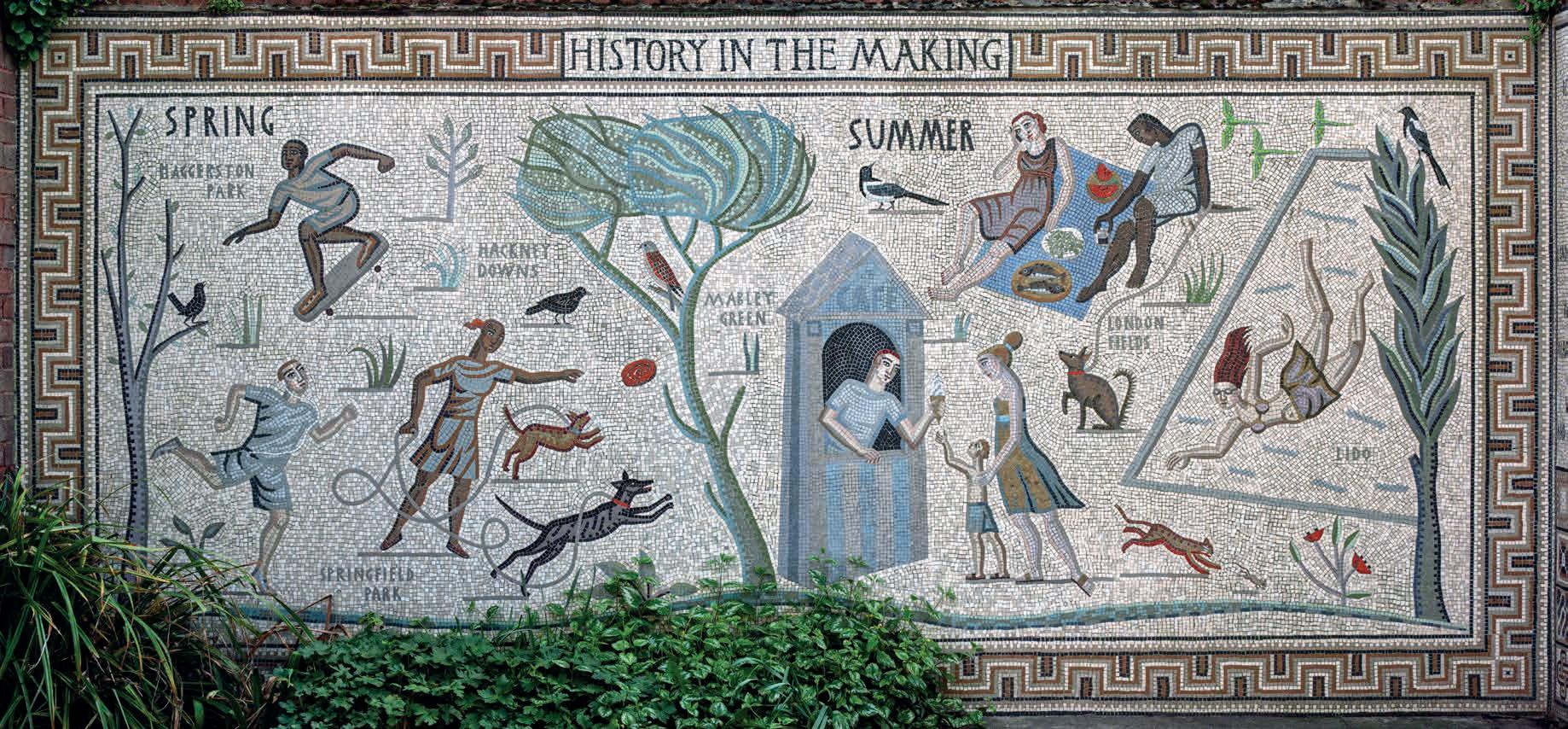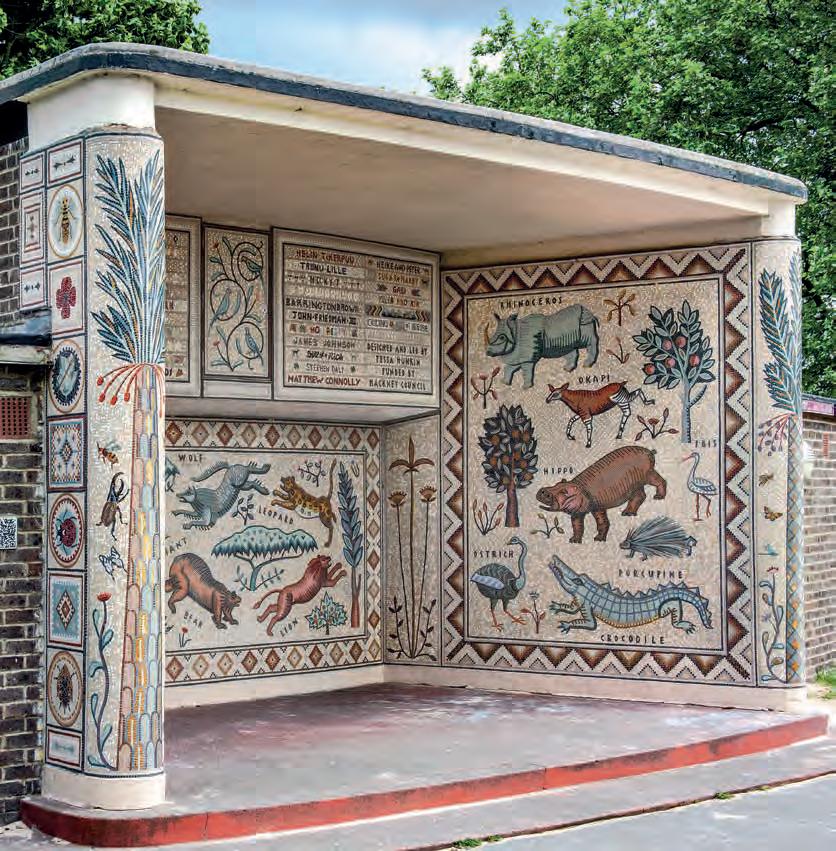The Acton Estate pavement conjures a bucolic farmland scene, imagined as Haggerston’s rural past.
Gracing the entrance to a redeveloped Haggerston estate, in 2017 this circular mosaic was the largest work yet undertaken by the project. The pavement was commissioned by the residents of the Acton Estate who reimagined the fields and orchards of Haggerston Farm owned by Nathaniel Acton who gave his name to their estate. Perhaps less idyllic than the mosaic suggests – surrounding brickworks supplied the building boom encouraged by the opening of Regent’s Canal – the farm would certainly have been growing food for the London markets.
The Acton family also owned land in Suffolk where they raised the livestock shown in the mosaic, some of which may be found today on the nearby city farm. Most of the featured fruits are familiar to residents but, as we may not recognise the trees that bear them, these are named on the mosaic alongside more obscure varieties like medlar and quince.
Gloucester Gate Playground
shows wildlife – hedgehogs, squirrels, rats and more –enjoying all kinds of fun.
The success of the London Zoo mosaics led to the project being invited to create a work for a playground nearby in Regent’s Park. Hedgehogs are given a starring role as they established a colony in the park, their only breeding ground in London. These nocturnal animals swoop and slide on the swing and on a kite string, uncharacteristically extrovert activities for such shy creatures.
All the animals are shown at play: a fox balances a ball on her snout, a squirrel blows bubbles, the heron is twirling a hoop, rabbits play catch and a frog jumps a rope swung by rats. The Jersey tiger moth, once found only on the south coast, also appears now that its rare London sightings include Regent’s Park. Each stage of the moth’s life cycle – the creamy cocoon, the ginger-haired caterpillar and the bold black and white forewings of the adult – is shown on the mosaic border.
Although Regent’s Park is celebrated for its Victorian planting schemes and rose gardens, the animals play among wildflowers: convolvulus, everlasting pea, brambles, bryony, old man’s beard, honeysuckle, ivy and dog rose. We hope that children may learn to identify these modest flowers from the mosaic and pick them out among their more showy neighbours.
Inspired by Roman hunting mosaics, a frenzied animal chase revives a drab Hackney Downs playground shelter.
By 2013 the playground shelter on Hackney Downs had become an eyesore. Benches were removed to deter rough sleepers and the rainbow-striped walls peeled and crumbled. The council offered workshop space for the project in the pavilion next door in return for improving the shelter and Tessa saw that the monumental quality of the structure invited mosaic decoration.
Park users were given a choice of designs. The first celebrated the history of the Downs from ancient common land to becoming a public park in 1884, after local people resisted enclosure by tearing down fences.
The other design featured exotic animals, appealing particularly to children, and reflecting Hackney’s history of popular entertainment. Frank Bostock, the ‘Animal King’ who built a global circus empire in the nineteenth century, is buried nearby in Abney Park. This second option was the popular choice.
The fluid and joyful style of Jordanian mosaics, especially those on Mount Nebo, provided the model for this design. Tessa adapted a radically simplified visual language to offer a framework that beginners could follow. A circular chase on the back wall, triggered by a mouse startling an elephant, grabs the attention of all the animals on the side panels. Meanwhile insects hover around the trunks of palm trees as they do in the mosaics of the Great Mosque at Damascus.
The mosaic features an okapi, an animal that Europeans believed to be fantastical until they saw it for themselves in 1901. A member of the giraffe family, native to the Congo, the okapi has a deer’s head and zebra’s rear, offering an irresistible subject for Tessa. Installation was completed in October 2014 in the face of a violent storm that drove heavy rain into the shelter while the adhesive was still wet. The team, who are all individually named in the panels above the chase, formed a human shield to protect their work.
With its lively decoration, the refurbished shelter now serves as a welcoming space for children on rainy days when it is too wet to use the playground.

